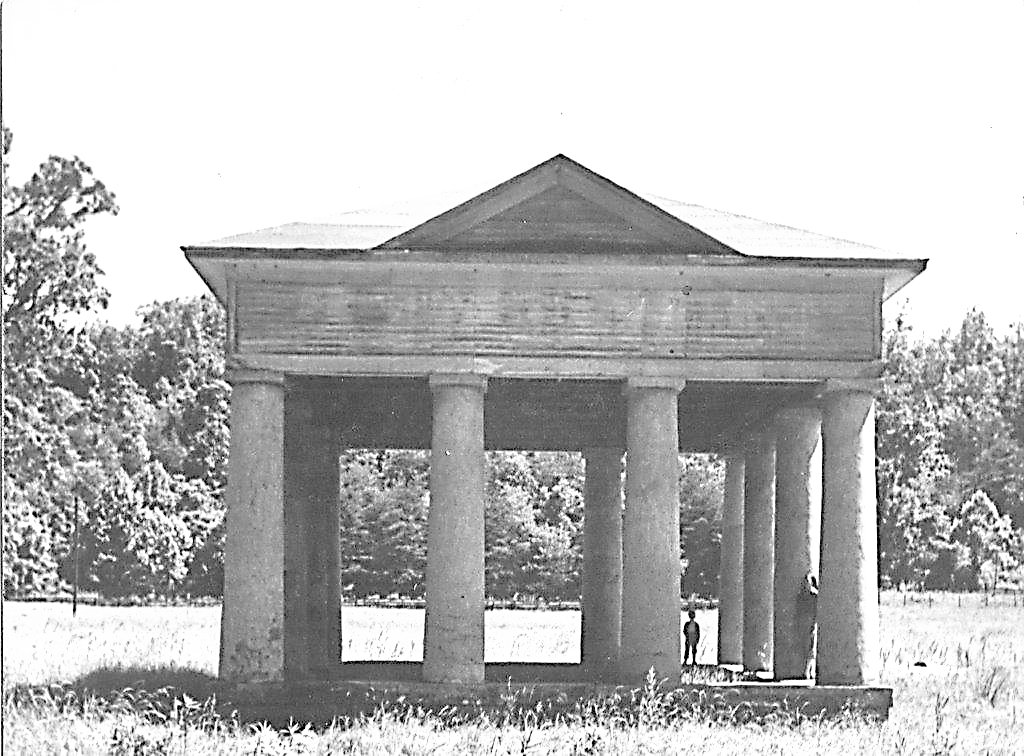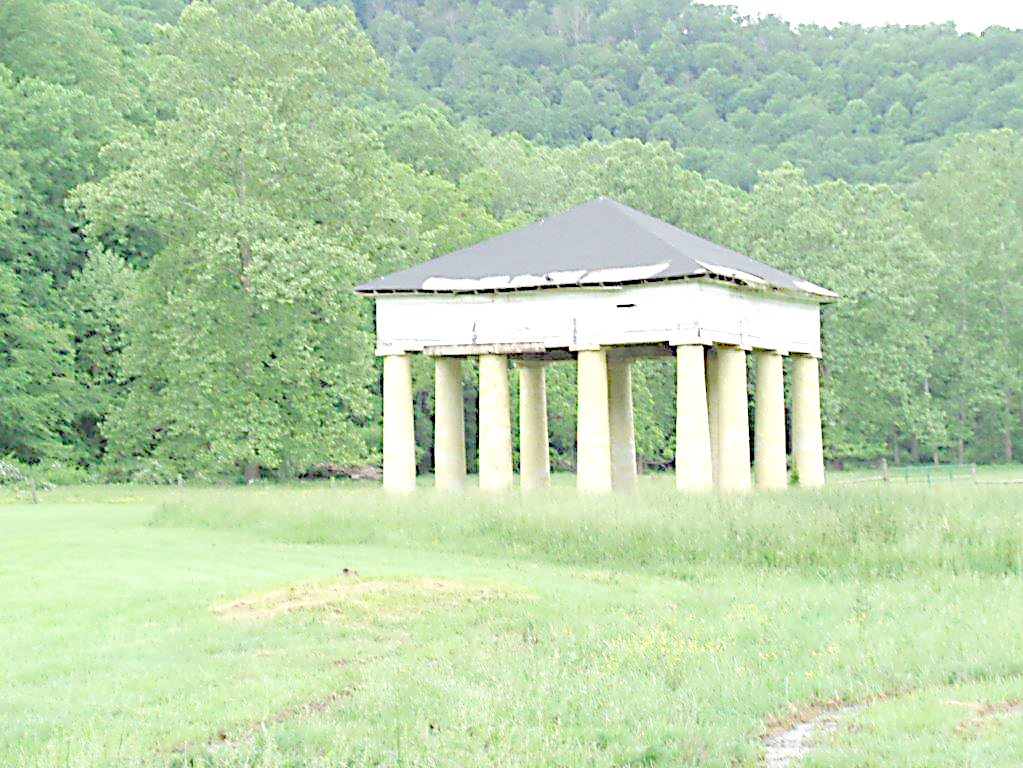
By Adam Pack
In a corner of West Virginia often considered extremely provincial, even by locals, the long forgotten Blue Sulphur Springs Resort once stood. All that remains of that 19th century spa is the 12-pillared Blue Sulphur Springs Pavilion. Within the 12 massive brick columns lies the titular attraction of the spa; the Blue Sulphur Spring. Built in 1834 alongside the resort of the same name, The Blue Sulphur Spring was once a swirling pool which members of upstanding society would avail themselves of for supposed health benefits. Alongside the Springs at White Sulphur and the Hot Springs of Homestead, Virginia, Blue Sulphur attracted a who’s who of 1800’s celebs and high-fliers, with the honor or hosting no less than a Bonaparte (Jerome).
However, all these years later, the spring in the center no longer fills with the allegedly reinvigorating and revitalizing waters which distinguished it as one of the three major panaceaic wells in the region. Instead, the pavilion has long ago entered disrepair and ruin, nearly forgotten. But not by all.
The resort and spring were involved in even more history than just in its heyday. The Greenbrier County Historical Society states, “The pavilion was the heart of a nineteenth century resort complex, Blue Sulphur Springs, where Dr. Martin was the resident physician and administered the first mud baths in the United States. During the Civil War, the resort served as a bivouac and hospital for both armies until finally torched by Union soldiers in 1864.”
As such, the Greenbrier County Historical Society has made the pavilion one of its main projects. The Society is currently “developing plans to restore the pavilion and develop it as a tourist and social destination” after the current owner “promised to deed the pavilion and some land to the Greenbrier Historical Society.”
Greenbrier County Historical Society Curator Toni Ogden explains that there is much reason to restore the springs to their former antebellum glory.
“Restoring the spring helps people see history and have that visual connection you can’t get any other way. And that connection is important, because these springs represent a portion of the history of medicine and of science. Folks before us dealt with horrible, highly fatal diseases constantly. Cholera, typhoid, yellow fever, the list goes on. The use of sulphur in various forms may not have had the desired effect, but it did something and had a very definite effect on them. These people faced death all the time, so it made sense to them at the time. They were doing the best they could with what they knew, what they had, and we’ve come a long way. Looking at the spring will definitely help drive that home.”
The visualization of history and “driving it home” are just what Ogden and the Historical Society are all about with this restoration project. Ogden makes this clear when she says, “Our ultimate goal for the pavilion for now is to first restore and recreate the original look of the structure, and then to increase accessibility closer and closer to the actual structure itself. At that point we at the society can take people there and contextualize and help interpret the structure for the benefit of those who come out.”
Margaret Hambrick, also with the Greenbrier Historical Society, explained in further detail the next step of plans needed to restore the structure.
“The Historical Society is currently bidding out the next phase, which will be a multi-step plan. First, we want to take off the roof, which is a non-original addition, and recreate the roof according to original designs. Then we want to raise the columns back to their original height, which were lowered some years ago, and then replace the original capitals of the columns with facsimiles which are recreations of the original. The second phase of the renewal includes the springbox, the portion of the spring in the center where the waters once pooled. We’ve found some 8×8 red brick tiles which we are fairly confident were the tiles that lined the springbox originally, and we’re going to work to recreate those and bring the springbox back to its former glory.”
While all this work is being done to the pavilion, work has already been underway to the land around the pavilion, and more is planned. “The last contract we recently completed was improving the drainage in and around the pavilion and we are proud to say that the middle of the spring is no longer an ‘accidental swimming pool,’” said Hamrick. “Stagnant water no longer collects there and that really helps beautify the spring and paves the way for the tile project later on.”
For those hoping to peruse the new and improved pavilion, it may not be that simple due to the fact that the area is in the floodplain. Hambrick mentioned that plans to access the structure will be limited to an extent.
“We hope to put up a primary fence around the area and a parking area near the road, and then a secondary fence around the structure itself. We will not staff the site, however, and plan to allow access only with guided tours.”
Hambrick is excited to see the next step of their efforts completed. “When it’s all said and done, it’ll look exactly like it did when originally built in 1834. It’ll be much more of a living, above-ground time capsule and we’re so ready to see it done.”



